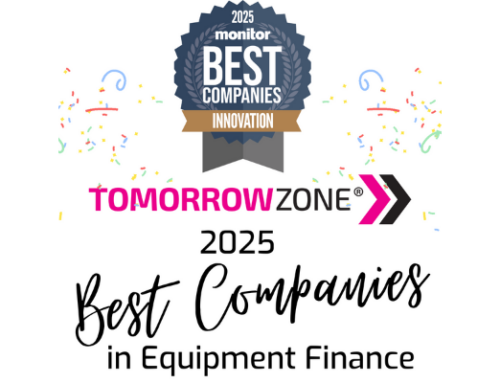
A significant part of my consulting and continual recommendation to clients is spending some time in the TomorrowZone®. What that means is setting aside dedicated time to stretch your thinking about your future. Think about the possibilities for your company, your industry, your profession. Consider trends and scenarios.
In your planning, you need to consider the future customer, not only what is happening right now. It’s not about prediction, but preparation. Considering multiple possible futures helps you to expand your options. Too often, I see clients caught up in either-or thinking. Is the old way of business going to come back or not? Which software should I buy, A or B?
Here are a few pointers I often share with my clients to help them start implementing this thinking:
Exponential Progress
First of all, it’s essential to get a handle on understanding the difference between linear and exponential progress and recognize that technology is progressing at an exponential pace in many, many categories, for many reasons that go beyond Moore’s law.
But when you have that foundational understanding, you can start to see where technology is going. When you know the pace at which these technologies are advancing, you can begin to think about your business in a new way because you can predict future capabilities.
Trend Monitoring
You need to understand how fast the tech is moving, and then you need to watch the trends that might impact your business or your industry over the next five to 10 years. Monitor these trends across multiple categories.
A popular acronym for this is STEEP, which stands for societal, technological, economic, environmental, and political. Monitoring trends across all those different facets of life can help you get a better picture of what’s going on and where things are going.
Examine the Inside and Outside of Your Company
As you’re thinking about your company’s future, don’t only examine what’s going on inside your company. It would be best if you looked at what’s going on outside of your company as well.
When examining the impact of trends, ask these questions:
- What is the likelihood that this trend is going to continue?
- What would be the direct impact to us if it did?
- What are the indirect effects for us, our customers, and our partners?
Technology Watchlist
The next thing that I encourage is for you to create your technology watch list.
With so many technology options today, it is easy to get overwhelmed by all of the possibilities. Where do you even begin? When you create a technology watch list, you can create filters for yourself to focus on the technology capabilities that are the most relevant to your business now and in the future.
I recommend starting where you’re most curious.
I have nine different trends that I’ve been watching for quite some time, but I change them up every so often. The top three categories I’m always watching are artificial intelligence, the internet of things, and blockchain. Why? Because we will find exciting business model innovation possibilities at the intersection of those, especially in the equipment finance industry.
Watch, Track, Reflect
The next step is integrating this thinking into your day-to-day. Once you have a watch list, start watching. It’s accessible and straightforward once you set your intention. You can use a practice called “habit stacking.” Tie your trend monitoring to your current daily routines to stay on top of trends. You can do this by reading about trends, watching videos, and/or attending business events that showcase the new technologies.
You may already have a daily reading habit or follow specific news feeds. As you are doing this, watch for those technologies. You’ll start to notice when you see new reports of innovations and applications for the things on your list. You’ll begin to hear stories of what’s going on in the lab and discoveries that could lead to future possibilities.
As you come across fascinating advances or applications, as well as implications of what this means for trends, capture and track it. I use a tool called Pocket. It’s just a simple bookmark tracking app with smart tagging that allows for easy categorization.
As I come across new findings, discoveries, or applications from my watch list technologies, I save the bookmark and tag it. I’ve been practicing this habit for many years. Now, whenever I’m seeking the latest happenings for a particular technology or trend, I pull up a list by those tags to find the discoveries that I’ve been tracking. Then use that information to examine trends for new possibilities.
Ask yourself:
- What could this mean for my business now?
- A year from now?
- Three years from now?
- Ten years from now?
I have been interested in TESLA for years. Once that car sparked my interest, I started to see them everywhere. It’s like that with your technology watchlist. When you set your intention for the trends and the tech you will pay attention to; you’ll start to notice them more. Whether at an event or a meeting with colleagues or even in your meetings with your team.
Imagine the Future
The last piece of this, and the most important, is making time to think about the future.
We can all say we don’t have time, but you can make time. Prioritize it. It doesn’t take that long; even spending 20 minutes to step back and consider what you see across the trends and technologies you are tracking adds value.
Take it a step further and ask yourself new questions.
- What might this mean for my business, industry, or career?
- What can I do about it?
- How could I apply this now or in the future?
- Do I need to start learning something?
- Do I need to stop doing something?
- Is there an experiment that I could do to get hands-on understanding and go a little deeper quickly?
It’s just about prioritizing and making the time.
There are a lot of different tools and techniques for thinking about the future. I like to do thought experiments and come up with multiple possible futures. In late March and early April 2020, as the world was blowing up around me, I did this. When business is primarily driven by speaking and onsite client workshops and consulting meetings, you have to think differently when getting together in person is not an option.
I made time to step back and think about where things are going.
- How do you do what you do when you can’t do what you do in person?
- Is doing what I do still relevant in this changing environment?
- How might I reimagine what I do to bring value to clients?
- What are the possible future scenarios to consider?
Rather than limiting myself to binary questions like, “Are we going to be doing meetings together in person this year or not?” I forced myself to come up with as many possible future scenarios as I could.
After considering half a dozen scenarios, I saw the direction I needed to pursue to reimagine my business for a disrupted business world. This exercise helped me to commit to going all-in on digital-first everything.
Our world radically shifted to digital, not by choice, and it is uncertain when or if things will get back to some version of “normal.” I’m not waiting for things to “get back to normal.” The old normal is obsolete in my book. Thinking this way helped me reimagine my business model for a digital-first world. TomorrowZone’s business model is digital-first, and physical-presence will be the option once it is safe. The decision criteria for in-person interactions are radically altered.
It’s crucial to take the time to pause and consider all these things that you’re watching and then think about what it means for your future.
If you would like to try a thought experiment to help you think through these things, download the technology watchlist thought experiment. If you are interested in taking your team through this exercise in a facilitated future workshop, book a strategy chat.
Click Here for a FREE Technology Watchlist Thought Experiment.





